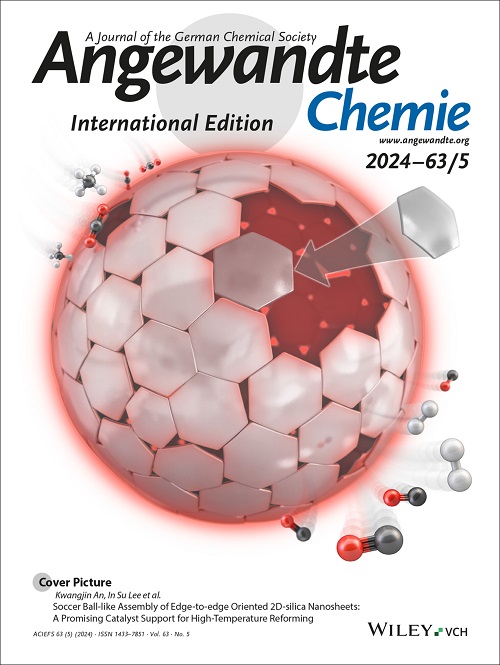Design Strategy for Small‐Molecule Organic Cathodes: Regulated Active Groups Enable High Capacity and Voltage in Aqueous and Seawater Aluminium ion Batteries
IF 16.1
1区 化学
Q1 CHEMISTRY, MULTIDISCIPLINARY
引用次数: 0
Abstract
Organic materials demonstrate significant potential as electrodes for aqueous batteries, owing to their high theoretical capacity, structurally tunable frameworks, and sustainable material accessibility. Small‐molecule organic electrode materials enable better active‐site accessibility but remain challenged by the dissolution in aqueous electrolytes, which deteriorates cycling stability, and poor conductivity due to limited conjugation. Here, we designed an organic small‐molecule cathode material (DPPZ‐CN) featuring functional pyridine, pyrazine, and cyano groups. Its highly conjugated fused N‐heteroaromatic structure provides strong intermolecular interactions and high reactivity, resulting in improved stability, capacity, and conductivity. The electron‐withdrawing cyano group further modulates electron delocalization and molecular orbitals, enhancing electronic conductivity and operating voltage. Through combined theoretical and experimental studies, including operando synchrotron FT‐IR, in situ Raman, ex situ XPS and 1H NMR, we demonstrate that DPPZ‐CN facilitates efficient dual‐cation storage (Al3+/H+), thereby reducing Al3+ cation repulsion and induced structural distortion. As a result, the Al//DPPZ‐CN battery exhibits outstanding capacity, a well‐defined voltage plateau, and an extended lifespan in organic aluminum batteries with aqueous and seawater electrolytes, highlighting its potential for operation in challenging environments.小分子有机阴极的设计策略:调节活性基团使水铝离子电池和海水铝离子电池具有高容量和高电压
有机材料由于其高理论容量、结构可调框架和可持续的材料可及性,证明了其作为水电池电极的巨大潜力。小分子有机电极材料具有更好的活性位点可及性,但仍存在溶解于水电解质的问题,这会降低循环稳定性,并且由于偶联性有限而导致导电性差。在这里,我们设计了一种有机小分子正极材料(DPPZ‐CN),具有功能吡啶,吡嗪和氰基。其高度共轭的N -杂芳香结构提供了强的分子间相互作用和高反应性,从而提高了稳定性,容量和导电性。吸电子氰基进一步调节电子离域和分子轨道,提高电子导电性和工作电压。通过理论和实验相结合的研究,包括操作同步加速器FT - IR,原位拉曼,非原位XPS和1H NMR,我们证明了DPPZ - CN促进了高效的双阳离子存储(Al3+/H+),从而减少了Al3+阳离子排斥和诱导的结构畸变。因此,Al//DPPZ‐CN电池在水电解质和海水电解质有机铝电池中表现出出色的容量、明确的电压平台和延长的使用寿命,突出了其在具有挑战性的环境中运行的潜力。
本文章由计算机程序翻译,如有差异,请以英文原文为准。
求助全文
约1分钟内获得全文
求助全文
来源期刊
CiteScore
26.60
自引率
6.60%
发文量
3549
审稿时长
1.5 months
期刊介绍:
Angewandte Chemie, a journal of the German Chemical Society (GDCh), maintains a leading position among scholarly journals in general chemistry with an impressive Impact Factor of 16.6 (2022 Journal Citation Reports, Clarivate, 2023). Published weekly in a reader-friendly format, it features new articles almost every day. Established in 1887, Angewandte Chemie is a prominent chemistry journal, offering a dynamic blend of Review-type articles, Highlights, Communications, and Research Articles on a weekly basis, making it unique in the field.

 求助内容:
求助内容: 应助结果提醒方式:
应助结果提醒方式:


